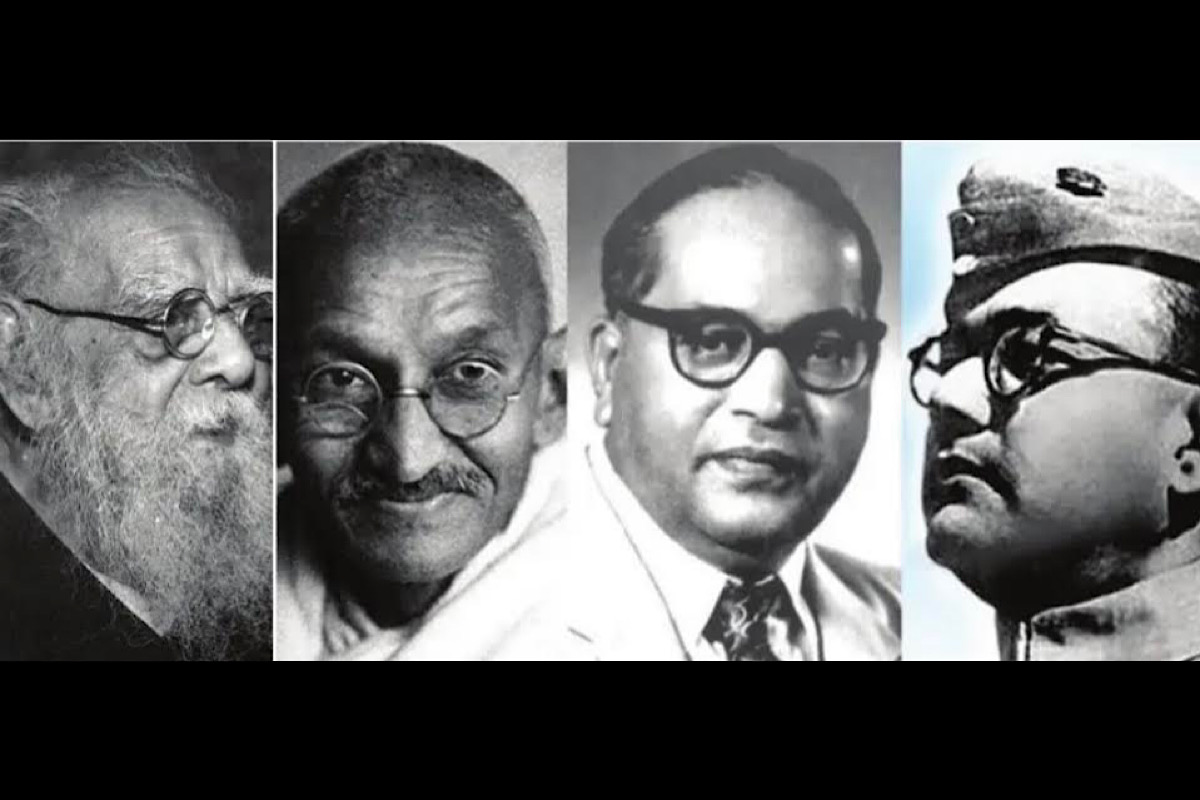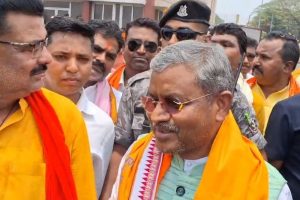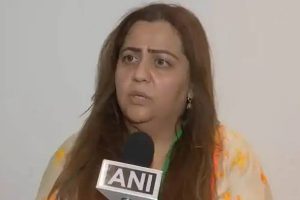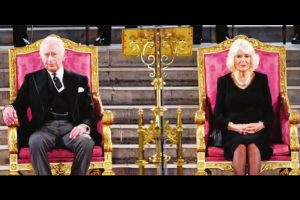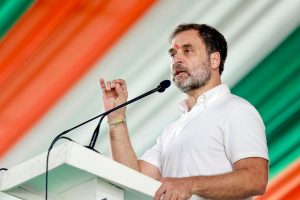For Periyar, abolition of untouchability and liberation of all non-Brahmin castes was non-negotiable. He and his associates welcomed the recommendations of the Simon Commission (1928) as it accepted representation of all castes. He even accepted, strategically, the under-representation of adi-dravidas as it was a principled acceptance of their political rights.
Again, at the Second Round Table Conference (RTC) held from 7 September to 1 December 1931, when Gandhi proclaimed unilaterally that he was the sole representative of adi-dravidas and rejected Ambedkar’s claim to represent them, the self-respecters were outraged. The opposition of the self-respecters and their massive demonstrations protesting Gandhi’s position were organized throughout the Madras Presidency. Periyar saw Gandhi’s move as an attempt to install a rule by the Brahmins and the upper castes.
The proceedings of the RTC confirmed Periyar’s reservations as he commented “just as how Mr Malaviya was concerned about protecting Brahminism so are Dr Ambedkar and Mr Rettanmalai Srinivasan committed to its destruction”.
He was critical of Gandhi’s denial of Ambedkar and Srinivasan’s legitimate claim to represent the depressed classes. Periyar was vehemently critical of Gandhi’s fast which eventually led to the Poona Pact (1932). Proportional representation for Periyar was justified both politically and economically. Since democratic representation ought to provide a proper equitable representational mechanism, it was of utmost need in a rigidly stratified society like India. After the advent of the Congress, it was the Brahmins who gained immensely from the jobs and benefits in education.
It was a fact that lower castes did not have access to quality education. To maintain their hold on disproportionate share of power the Brahmins and upper castes espoused patriotism and nationalism. Proportional representation was the only means to reduce this imbalance as that would ensure rough parity for the underprivileged.
Periyar argued for proportional representation in view of the continuing importance of social identities as he was aware that erosion of these would take a long time. The Brahmin monopoly of power brought with it unwarranted social prestige and the means for domination. It also accrued to them financial advantages as they cornered the more coveted jobs. With the emphasis on the need for universal education, Periyar rejected the argument of birth and caste as the basis of higher intelligence and ability.
He also rejected the enforced caste-based division of labour and dreamt of a future where professions would be interchangeable with Brahmins serving even as domestic helps and as farm labourers. He developed his argument within the Gandhian framework of equalitarian economic order. Initially he supported spinning and khadi but later he shifted his position and became a strong critic of Gandhian economic programmes both in the context of rural and industrial prescription.
Periyar considered the Civil Disobedience Movement as subversive of law and order and more reprehensible was the growth of an attitude of defiance of authority and indiscipline in the minds of the people. His other argument was a familiar one that in India caste was class; a shard had no right to possess property and even “if a shard had property the Brahmins have every right to take it away from him by force”. This was sanctioned by scriptures.
He alleged that Gandhi’s support of the varnashrama dharma reinforced this structured inequality as he had argued that the poor villagers would not “seek to hoard wealth like the Bombay bania,” and should “continue to labour honourably grazing cows, making footwear”. He virulently opposed Gandhi’s concept of Ram Rajya. It was a big leap for Periyar as he moved from one of total support to Gandhi’s khadi programme to being its virulent critic. For him, khadi instead of being an instrument of economic regeneration had become merely a symbol of a new superstition.
Gandhi himself accepted in the late 1930s that the propagation of khadi was in practice symbolic. Periyar also took up Gandhi’s rejection of technology and unnecessary glorification of an imagined golden past.
Varnashrama dharma itself was inimical to the dignity of labour. He was outraged at the defence of fixity of labour where the privileged did not perform manual work and survived on the work and surplus of others. He rejected the doctrine of bread labour as impractical and cosmetic There are several similarities between Periyar’s criticisms and those of Tagore. These criticisms received a fresh impetus with the announcement of Gandhi’s Wardha Scheme of Education in 1937.
The insistence on vocational education preferably within the ordained caste category was unacceptable to Periyar. Periyar elaborated his argument in ‘Caste Worker and the Wage Worker’ (1940) in which he argued that the division of labour between high and low wage earners was preserved by a rigid communal affiliation and marriage.
As this rigid separateness was the basis of social and economic existence it was nurtured by varnashrama order. The ethics of work also reflected communal rather than individual existence. Brahmins restricted themselves to white collar jobs and avoided manual labour by perpetuating the myth of non-Brahmins as hardworking.
He felt that this rigid structural division was of crucial significance while considering vital questions of both equality and justice. Social ownership of wealth was a mathematical problem while self-respect was an “existential problem”.
He alleged, according to Geetha and Rajadurai that the socialists and communists were oblivious to the “deceptions of religion and the power of caste whereas his own movement was committed to ending the influence of either”. Periyar got acquainted with several radical ideas when he visited Europe and the former Soviet Union in 1932.
But the immediate task for him was the adi-dravidas as after the Poona Pact, the Congress leadership proclaimed a satisfactory solution to the caste problem. He was not convinced when Gandhi announced his temporary withdrawal from politics and established the Harijan Sevak Sangh. He realised that a meticulous multipronged rebuttal was necessary for which a consolidated opposition movement by entering the political arena through electoral contest was essential. He was sure, like Subhas Bose, that the Congress would compromise with British imperialism and Gandhi’s suspension of the civil disobedience movement was a clear indicator of that.
The self-respecters were critical of the Congress and Gandhi’s silence over the execution of Bhagat Singh and his associates as Bhagat Singh’s socialism meant the end of poverty. The self-respecters’ stress on abolishing untouchability had a similar equalitarian impulse. Periyar rejected the 1932 Karachi Congress resolution on rights which stipulated non-interference by the state in religious matters as inimical to the interests of non-Brahmins for it would not end untouchability, women’s subordination nor reform the caste system. He considered Gandhi as a proponent of Brahminism.
Periyar also elaborated his reasons for rejecting the Gandhian method of satyagraha. For him “war of truth” had no meaning as the opposite side might argue the opposite, considering truth itself was relative. Criticizing the philosophy of moral righteousness of satyagraha, he pointed out that truth was a contested concept liable to several interpretations. For instance, Malaviya’s truth did not match the truth of self-respecters. He also pointed out since the doctrine of satyagraha was an individualized experience, the premise of judging its utility was faulty.
Periyar’s nationalism was based on a rational foundation without any compromise to citizen’s dignity and sensibilities. A nation’s existence was dependent on an all-round growth of knowledge, spread of education, the cultivation of rational thought, work, industry, equality, unity, initiative and honesty and the abolition of poverty, injustice and untouchability. Periyar found contemporary social stratification revolting as it was totally degrading and devoid of any sense of human equality. He proposed a rights-based order with equality for all citizens.
His association with the Congress was short-lived. Even in this brief period, his disillusionment set in early when he could perceive the predominantly upper caste basis of the Congress leadership in Madras Presidency; and their allegiance to Gandhi’s radical social reform programme being tactical rather than principled. But the decisive break came with Gandhi endorsing the varnashrama dharma in 1927.
He rejected Gandhi’s defence based on functionalism and duty since he regarded reason, common-sense and acquisition of rights as of paramount importance. It was this emphasis on rights on which the entire edifice of the self-respect movement was based. Periyar found that a firm commitment to individual rights eluded the Gandhian Congress and it was this ideological differentiation that provided the sustenance to the enormously successful social transformation in Tamil Nadu. These reforms echo even today
(The writers are, respectively, a retired Professor of Political Science, University of Delhi and Professor of Political Science, Jesus and Mary College, Delhi)

